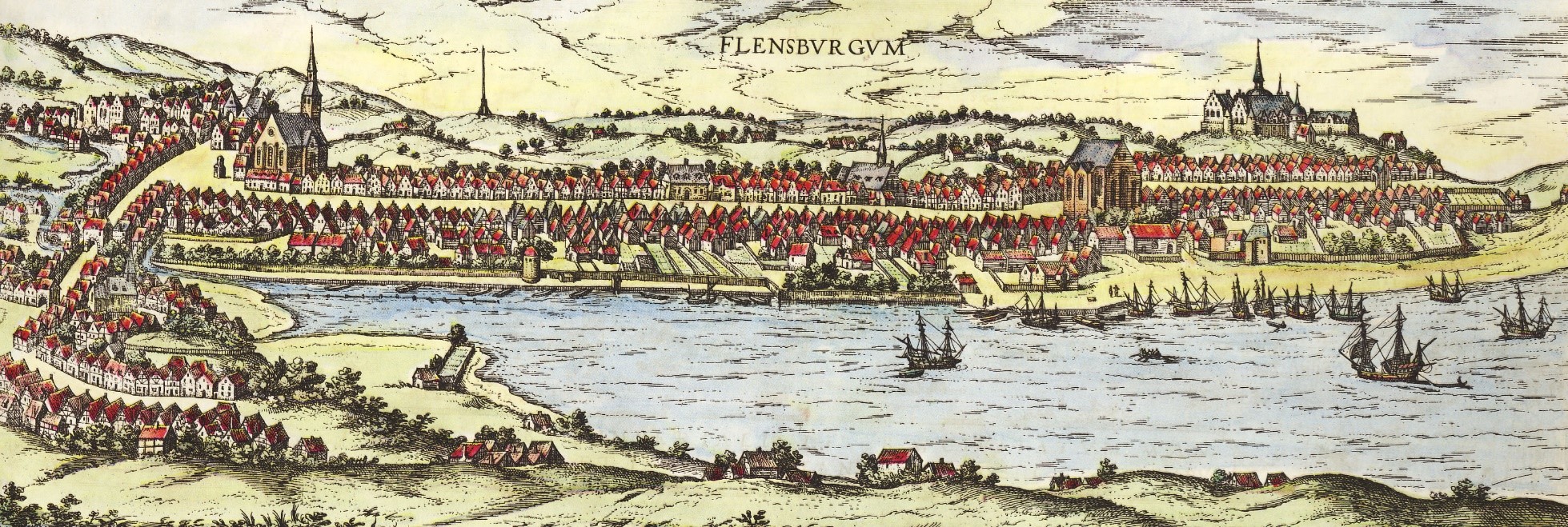
About the Flansburg Family
Welcome to the Flansburg family page, where tradition, love, and a bit of adventure come together. We are the Flansburgs, a close-knit family with roots that run deep in the heart of Oklahoma. Through the years, our family has grown in both size and spirit, shaped by our shared experiences and individual pursuits.
Our Story

Flensburg Coat of Arms
From Flensburg to America
The Flansburg family traces its roots back to the late 1600s in Flensburg, a city located on the northern tip of what was then Denmark and is now part of Germany. Known for its picturesque location at the edge of the Flensburg Fjord, Flensburg was a vibrant hub of trade during the time of Jan Jansen Van Flensburg, our family's original immigrant. A thriving port city, Flensburg was renowned for its connections to the North Sea and Baltic regions, as well as its robust shipbuilding and maritime industries. It was from this dynamic environment that Jan Jansen set out for a new life in New York.
New Beginnings in New York
Jan Jansen arrived in New York from Rotterdam, Holland, shortly after the city was renamed from New Amsterdam in 1664, sometime in the late 1660s or 1670s. The first records with his name appear in 1679 when he joined the Dutch Reformed Church and married his first wife, Willemyntie de Kleyn. Willemyntie was the daughter of Hugh Barents de Kleyn, an alderman and wealthy merchant in Holland. Jan Jansen could be considered what today we would call "upper class." Records show that he was frequently involved in many business dealings and, in fact, was one of the few people in New York to own two homes. The sponsor for his son's, Johannes, baptism was none other than the Mayor of New York.
Willemyntie's brother was married to the daughter of Jacob Leisler, a figure famous for his role in Leisler's Rebellion, a brief takeover of the New York colonial government in 1689. Leisler seized control of New York City and later, the entire colony until 1691, when English troops and a new governor were sent by King James II to New York to regain control. Jacob Leisler and an accomplice were captured, tried, convicted of treason against the crown, and sentenced to be hanged "by the Neck and being Alive their bodyes be Cutt downe to Earth and Their Bowells to be taken out and they being Alive, burnt before their faces." However, they were spared the disemboweling and were cut down before dead and decapitated by sword. This connection to an important event in early American colonial history is an interesting piece of the Flansburg legacy.
After Willemyntie's passing, sometime in 1686 or early 1687, Jan Jansen married Margrietje Martens in 1687, and it is from this second marriage that I am descended.
Jan Jansen had nine children in total—four from his first marriage and five from his second marriage to Margrietje. As their family grew, so did their need for land, prompting Jan Jansen to move his family from New York City to the Schenectady area in upstate New York in 1702. The fertile land and expanding frontier provided new opportunities for the Flansburg family, who became deeply rooted in the area for generations.
Forging a New Nation
Our family's strong sense of military service began with William F. Flansburgh, who served in the Revolutionary War. William enlisted with the regular troops in Albany at the onset of the war, and fought in major engagements such as the Battle of White Plains in October 1776 and the Battle of Monmouth on June 28, 1778. He was discharged shortly after Christmas of 1778, but the war had not yet ended.
In the spring of 1780, William re-enlisted with the New York Levies at Niskayuna, near Cohoes Falls, under Colonel Warner and Major Chipman in Captain Drake's company. His unit marched from Saratoga to Fort Stanwix, and eventually to Onondaga, where they encountered a large contingent of British-backed Native Americans. During their retreat, they were surrounded by St. John's forces at Canaseraga, forcing them to surrender.
William and his comrades were bound in pairs and marched to Oswego, where they were handed over to Native allies, who took them to Chippawa, Ontario. The ordeal of his capture saw him taken from Niagara to Montreal, where he was placed in irons and held on a guard ship. William and the other prisoners were eventually sent to London aboard St. John's ship, where they remained confined until the end of the war. After their release, they were returned to North America, landing first in Halifax, then traveling to Quebec. From there, William and the few survivors of his unit made the arduous journey back to New York on foot, completing his remarkable and harrowing wartime experience.
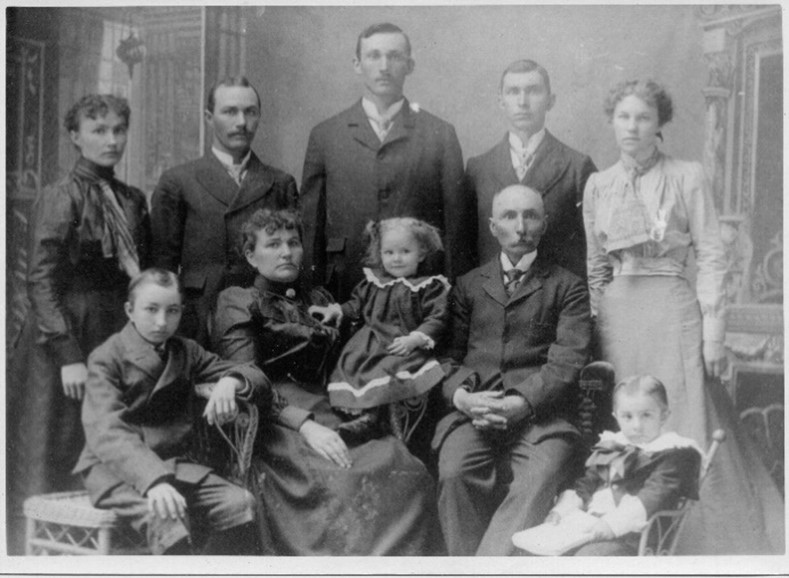
Peter Deed Flansburg and Family
Back Row Left to Right: Eve, Perry, Herb, Charles, Maude
Front Row Left to Right: Dan, Eliza holding Rose, Peter, Earl
Westward Dreams and the Call of the Frontier
William's great-grandson, George Perry Flansburgh, was the last Flansburg (of my line) to be born in New York, in 1877. Not long after George's birth, George's father, Peter Deed Flansburgh, believing in manifest destiny and the opportunities that awaited in the west, moved the family to the Brainard area of Minnesota in the late 19th century. Drawn by the booming logging industry and a sense of adventure, Brainard was famous for its connection to Paul Bunyan and Babe the Blue Ox, iconic characters of American folklore. The tales of Paul Bunyan, a legendary lumberjack, embody the spirit of hard work and frontier life, values the Flansburg family admired and sought to emulate. And just like Paul Bunyan, Peter became a lumberjack.
Similarly, my maternal grandmother's family, the Stahlmans, embarked on a journey westward that mirrored the Flansburg experience. The Stahlman family originated in Klosterbauerschaft (now Quernheim), Germany, with their earliest known ancestor, Ernst Friedrich Ludwig Stallman, being baptized in 1766. In the early 19th century, his grandson, Ernst Friedrich Stallman, left from Rotterdam, following a well-trodden immigration route to what is believed to be Baltimore, Maryland.
From their arrival in America, the Stahlmans began their westward migration, settling first in Pennsylvania, then moving to Indiana and Ohio. The family later established roots in Kansas before ultimately making their way to Oklahoma in search of new opportunities and fertile land. This path westward, from one frontier to another, reflected the pioneering spirit that characterized many American families during this period, driven by the promise of land and a better future.
While the Flansburg family has its roots in Denmark and later New York, my maternal grandfather's ancestors, the Nelsons, trace their lineage back to Fairmount, West Virginia (part of Virginia in the mid-1700s). The Nelson ancestors emigrated from Sweden, settling in Virginia and later moving westward into Indiana in the early 1800s.
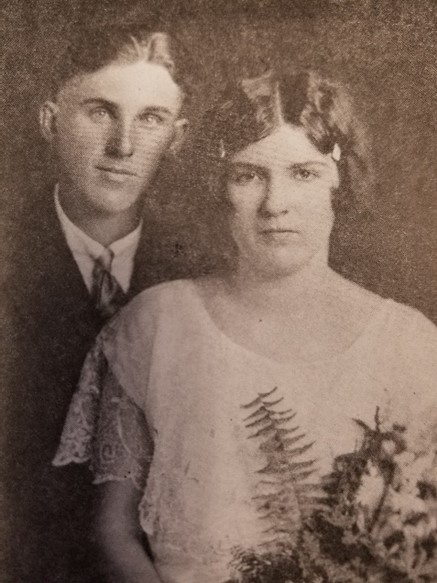
John and Vera Stalman Wedding
From Kansas to Oklahoma: Hardships and the Great Depression
My great-grandfather on my mother's maternal side, John Ernst Stahlman, was born in 1906 in Phillipsburg, Kansas. Shortly after his birth, the family moved to Sarita, Texas, and then, when John was three years old, they moved again to Osceola, Missouri. Finally, in 1911, the Stahlmans made their last move to Gage, Oklahoma, where they settled.
In 1925, at the age of 19, John met Vera Stoner, who was only 16 at the time. The two met at a play party, and John would frequently ride horseback to visit her. Shortly thereafter, the couple married.
Their daughter, my grandmother, Bonny Lue Stahlman, was born in 1929. Seven months after her birth, the stock market crashed in New York, signaling the start of the Great Depression. During this difficult time, John worked hard to hold on to his farm, but like many farmers of the era, he ultimately lost it. John, a hardworking man, took on various jobs to support his family, including hauling salt and cattle. Like many during the Great Depression, John worked for the Works Progress Administration (WPA), where he helped build roads and bridges in Oklahoma.
My great-great-grandfather on my mother's paternal side, David Elmer Nelson, was born in Indiana in 1848, and married Mary Ann Perfect in 1868, shortly before they moved to Iowa. They had eight children, the youngest being my great-grandfather, William Andrew Nelson, born in Iowa in 1881. William, who worked as a butcher, married Alta May Bryan in 1902 after moving to Moscow Flats, Oklahoma in 1901, where he met Alta, whose family had recently relocated from Kansas. William and Alta also had eight children, and around 1910, the family moved to Mutual, Oklahoma, where William continued working as a butcher until his death from a heart attack in 1947.
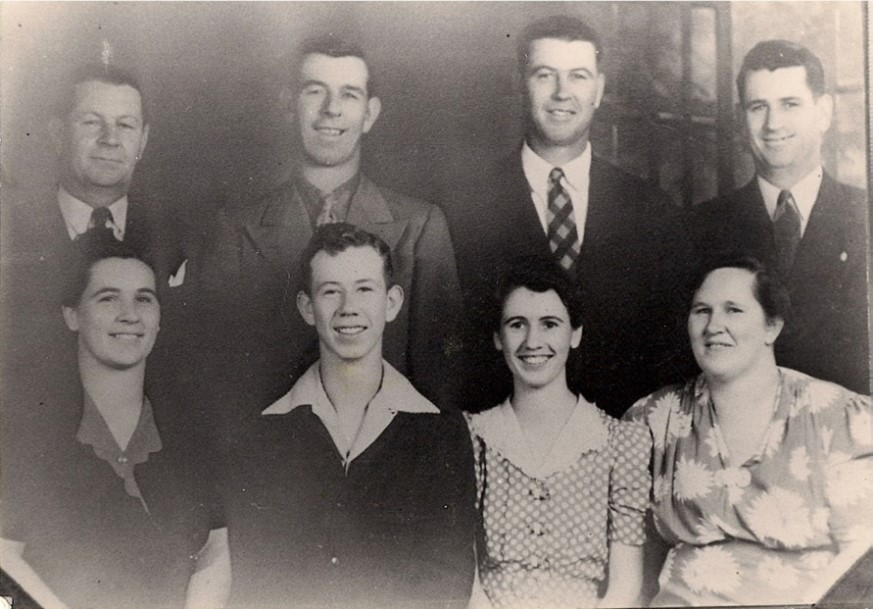
Clifford Nelson (front, 2nd from left) and Siblings
Life was particularly hard for the Nelson family. Alta took on odd jobs, including doing laundry for others and driving a school wagon—a horse-drawn covered wagon that picked up children for school, a precursor to the modern school bus. The Great Depression brought further difficulties, as Alta became crippled for ten years before succumbing to cancer in 1943. Despite her condition and without a wheelchair, she continued to do household chores by scooting around in a rocker. A devout Baptist, Alta was a dedicated member of the Moscow Baptist Church for 25 years, as well as a member of the Helping Hand Club and the Rebekah Lodge, until ill health forced her to retire.
World War II: A Legacy of Service
The family's legacy of service continued with my paternal grandfather, Lloyd George Flansburg, who served in the Army during World War II and participated in the pivotal Battle of Okinawa. His courage and dedication during the war exemplified the Flansburg family's commitment to service and sacrifice in defense of their country.
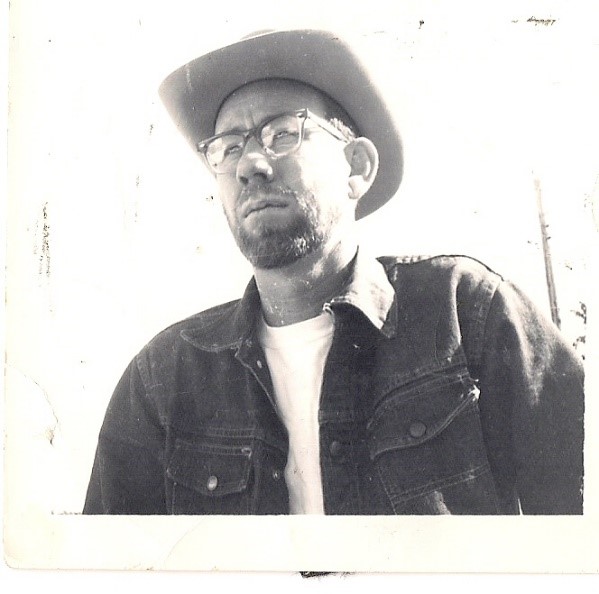
Clifford Nelson
My maternal grandfather, Clifford Wayne Nelson, born in 1927, was the youngest of eight children. Clifford was particularly close to his mother, and her death in 1943 had a lasting impact on him. Grieving her loss, Clifford lied about his age to enlist in the U.S. Navy, where he participated in the Battle of Iwo Jima. He piloted an amphibious landing craft that carried Marines to shore during the invasion of Iwo Jima.
Life After the War
My maternal great-grandfather, John, was too young to participate in World War I and too old by the time World War II began. However, an associate of John's moved his family to Oklahoma City to answer the urgent call for defense plant workers after the bombing of Pearl Harbor. John rented his associate's farm and, after the war, purchased it for $15,000. Today, 10 acres of that land have been passed down to me, continuing the family's legacy on that land.
My paternal grandfather, Lloyd, was married in South Dakota to Lucille Elsie Jones and resided there awhile where my father, Gary Lee Flansburg, was born in 1947. When my father was a teenager, Lloyd moved the family to Puyallup, Washington.
After returning from the war, my maternal grandfather, Clifford, began working on a ranch in Woodward, Oklahoma, where he met my grandmother, Bonny, at the Pollyanna Café. The couple quickly fell in love and married in 1947, just five months after Bonny's 18th birthday.
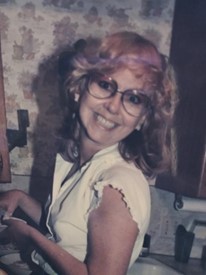
Connie Nelson
Following their marriage, Clifford and Bonny moved frequently due to Clifford's various jobs. My mother, Connie Lue Nelson, was born in 1948 in Mooreland, Oklahoma. Clifford initially found work as a signalman for the Santa Fe Railroad. His job took the family to several locations, including Amarillo, Canyon, and Slaton, Texas, before they moved to Wellington, Kansas. In 1950, both Clifford and Bonny took jobs with Boeing in Wichita, Kansas, marking a shift in their careers toward the aerospace industry.
In 1959, Clifford moved the entire family to Englewood, Colorado, where he worked for the Martin-Marietta Company. During this time, Clifford contributed to the construction of nuclear warheads as part of the arms industry during the Cold War. Clifford remained in this line of work for six years.
By 1965, Clifford and Bonny's relationship faced challenges, leading to their divorce. Afterward, Clifford relocated to Seattle, Washington, where he continued his career with Boeing, continuing his work in the aerospace industry.
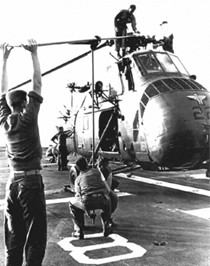
Cpl. Gary Flansburg on the opening morning of Operation Beau Charger, May 18, 1967
Bravery in the Skies: Vietnam and a Marine's Story
In 1965, my father enlisted in the Marines at the urging of his father, Lloyd, who believed the Marine Corps would offer more protection than being drafted into the Army, which had significant ground forces in Vietnam. Trained as a helicopter mechanic and gunner, my father was deployed to Vietnam. During a mission, his helicopter was shot down near a Vietcong village. With no option to retreat, he removed the machine gun from the downed helicopter and, alongside his fellow Marines, fought off enemy soldiers for three days. By the time they were rescued, my father was the last surviving Marine, a testament to his bravery and resilience in the face of overwhelming odds.
After two tours in Vietnam, my father was rotated back to the States to Camp Pendleton in California.
Bonny and Jess: A Union of Hearts and Minds
In the late 1960s, Bonny sought to carve out a new path in life after her first marriage. An aspiring writer, she pursued her dreams with vigor, eventually earning both her bachelor's and master's degrees in journalism from the University of Oklahoma—the same institution where I would later follow in her footsteps. Her determination to succeed in the field of writing inspired me to embrace my own academic journey in journalism.
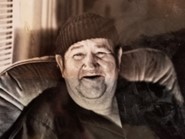
Jess "Tag" Speer
Bonny met Jess Willard Speer while attending a journalism conference in Colorado. Jess, also a journalist, quickly formed a bond with Bonny when they discovered they were both from Oklahoma. Their shared roots fostered a deep connection, and they soon married, blending their lives and aspirations.
Jess's life before meeting Bonny was marked by extraordinary bravery as a survivor of the USS Arizona during the attack on Pearl Harbor in 1941. He later fought in the Battle of Guadalcanal, where he survived the sinking of the light cruiser USS Atlanta. During this intense battle, Jess lost a finger and spent nearly 24 hours floating in the water, desperately holding in his intestines with one hand before being rescued.
After being pulled from the water, he spent time in a makeshift field hospital. Jess, along with other severely wounded sailors, was left behind when it was thought that the Japanese were preparing to overrun their position. He endured significant physical injuries, including a metal plate in the back of his head, and suffered from recurring nightmares, crying out in pain for his lost fellow sailors while often singing old sea shanties.
Jess's work took the family from Englewood, Colorado, to Cedar Rapids, Iowa, where my mother spent her senior year of high school. After graduation, my mother moved back to Colorado to live with a childhood friend, but the family later relocated to Santa Ana, California, where Jess had accepted a job as a tech writer. My mother didn't stay long in Colorado and moved out to join the rest of the family after her sister, Donna, graduated high school.
From California to Washington
In California, my mother found work as a clerk at the California Department of Motor Vehicles. Connie and Donna got an apartment together in Orange County, enjoying all the fun and crazy experiences typical of 18 and 19-year-olds in the 1960s. One evening, while dining at a local McDonald's, they met two Marines from Camp Pendleton. They flirted and later agreed to get some "adult beverages" and headed out to the beach. However, as the evening progressed, Donna discovered that she didn't really like the Marine she was paired up with—he was rude, crude, and a bit crass. She asked my mother if they could swap, and my mother agreed.
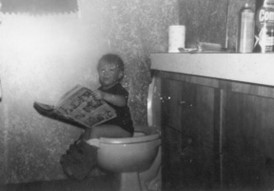
Glenn age 3
It wasn't the first time my mother had encountered this Marine. She had previously crossed paths with him at a party, where he spent most of the time underneath a stairwell, spitting on the ground because he was so drunk that he was on the verge of throwing up. Despite their rocky introduction, my mother continued to see that Marine, and in 1968, my father, Gary, and my mother, Connie, were married. Not long after American astronauts landed on the moon in 1969, I was born. My parents named me Glenn, after the famed Marine astronaut John Glenn.
Shortly after my birth, the family moved to Puyallup, Washington, where I spent the first few years of my life.
Oklahoma Bound
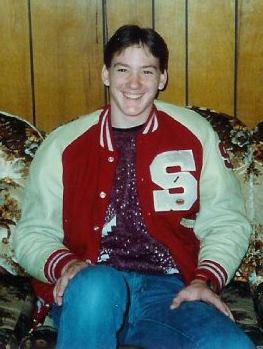
Glenn age 18
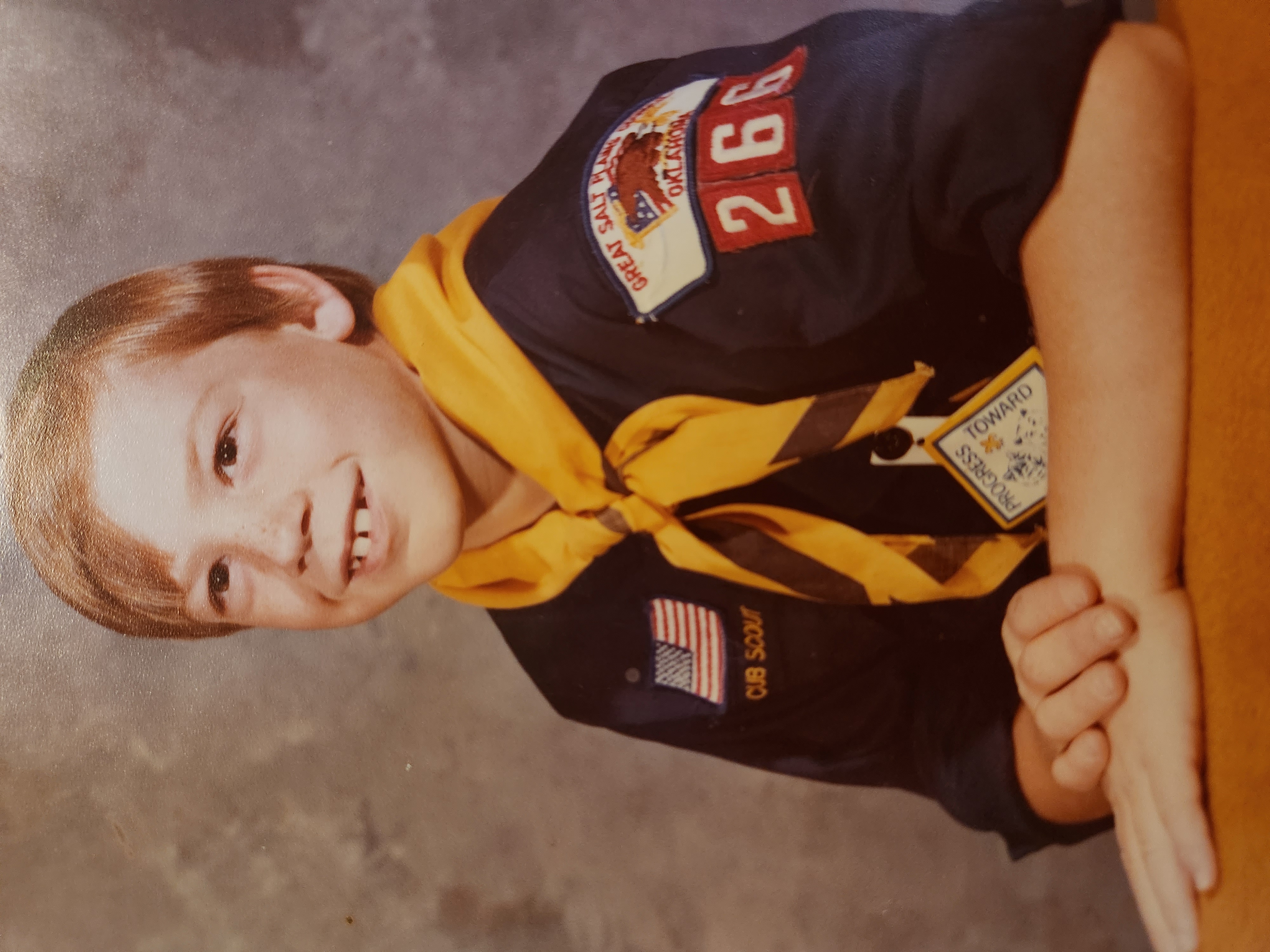
Glenn age 8
However, when I was four years old, my parents divorced, and my mother and I moved to Shattuck, Oklahoma, where I grew up. My mother remarried, ironically to another man named Gary, who was a dairy farmer. It was on this farm that I learned how to milk cows, bale hay, and cut wheat. My stepfather also taught me valuable skills like carpentry and automobile maintenance, both of which became essential as I grew older. I also owned a horse and loved to trail ride through the Oklahoma countryside, enjoying the freedom and connection with nature.
In Shattuck, I also played high school football and was active in the Boy Scouts, experiences that helped shape my sense of discipline and teamwork.
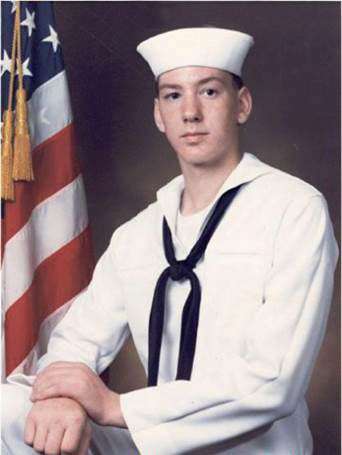
Seaman Recruit Glenn Flansburg 1987
Navy Legacy: Anchors Aweigh!
After graduating high school, I joined the Navy, following in the footsteps of my grandfather, Clifford, and my step-grandfather, Jess, both of whom served in the Navy during World War II. Attending boot camp at Great Lakes, Illinois, I then moved on to A School in Norfolk, Virginia. My first duty station was in Adak, Alaska, a remote outpost in the Aleutian Islands. As an Ocean Systems Technician/Analyst (OTA) during the Cold War, my role was to track and listen for and track Soviet submarines, a critical task during a tense period of global geopolitics.
After Adak, I was stationed at Whidbey Island, Washington, where I reconnected with my father, who was still living in Puyallup. It was also at Whidbey Island where I met my first wife, Linda Case, a Canadian Navy sailor.
Linda and I had a child, Charles Andrew Case, affectionately called "Drew." We chose his name to honor British royalty, reflecting Canada's close connection to the British crown. Drew was named after Prince Charles (now King Charles) and his younger brother, the now disgraced Prince Andrew. Unfortunately, Drew was born several months prematurely, had many health issues, and passed away before his first birthday. Around the same time Drew was born, I was diagnosed with type I diabetes.
Following Drew's passing, I received a medical discharge from the Navy. The grief of losing our child and my discharge put a strain on my marriage to Linda, and we eventually separated and later divorced.
Boomer Sooner: A Return to Oklahoma
 Glenn age 53
Glenn age 53After my discharge in 1992, I returned to Oklahoma to attend the University of Oklahoma in Norman, where I initially studied Russian. I had always wanted to attend OU after my enlisted service so that I could go to ROTC and get a commission as a naval officer. However, having just recently lost a child, a marriage, and my precious naval career, I failed out of college. I took work doing one of my childhood hobbies, as a computer programmer. A career I still continue doing to this day.
In 2004, I met my future wife, Julia, while on a trip to her hometown of Orel in her home country of Russia. Seventeen years after my first time at OU, I returned to finish my bachelor's degree, majoring in Creative Media Production and minoring in Russian. During this time, Julia helped tutor me while I completed my minor in Russian. After graduating with my bachelor's degree, I stayed in school and attained a master’s degree in journalism and mass communication from OU and am currently working on my PhD in the same field.
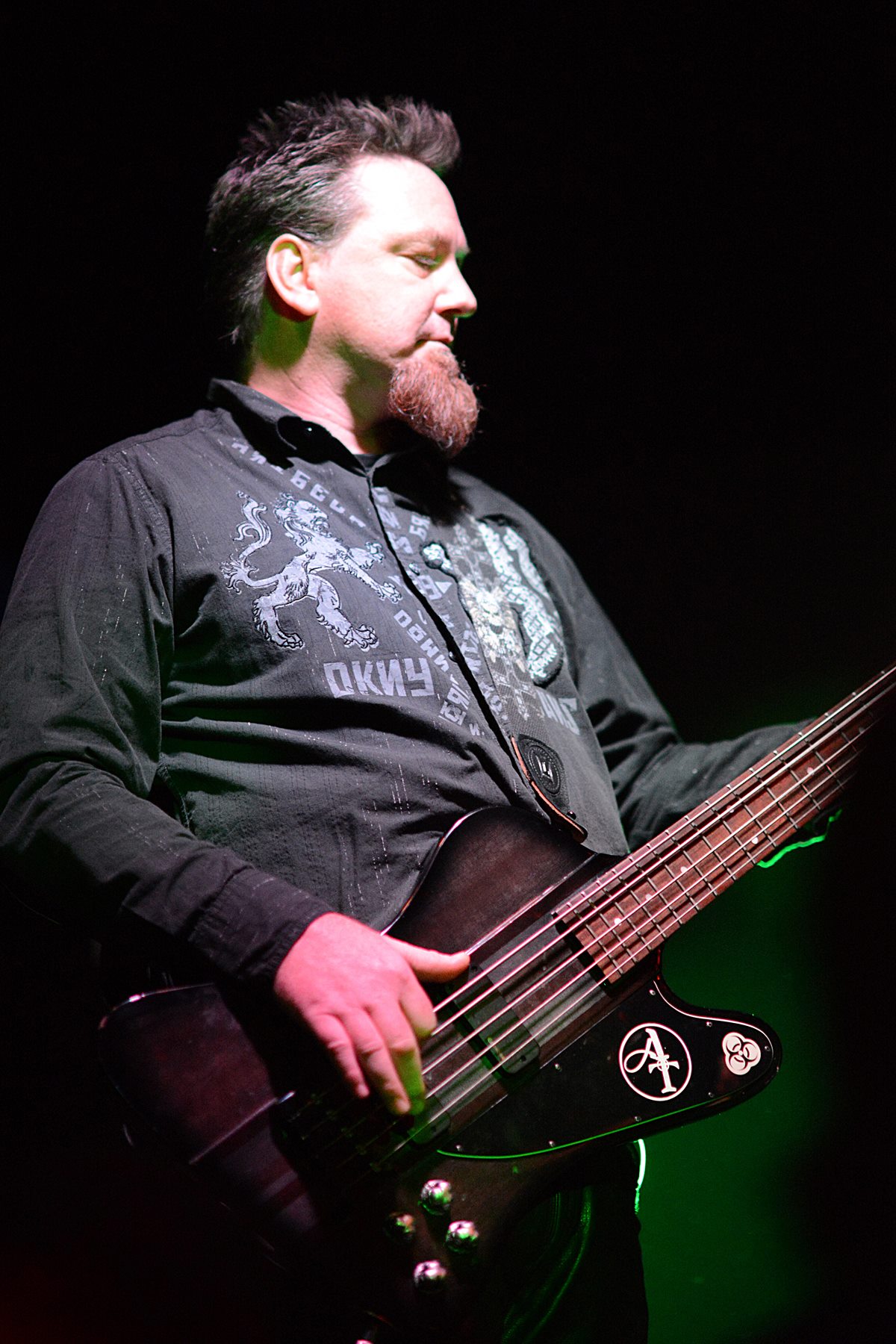 Glenn on bass with Angelical Tears
Glenn on bass with Angelical TearsTogether, Julia and I have built a life in Oklahoma with our children: Kelson, Stefan, and Lilianna. We are also proud to be founding members of the symphonic metal band Angelical Tears, where I play bass guitar, and Julia serves as the lead vocalist. Our passion for music has brought us closer together and allowed us to share our creativity with others. You can learn more about our music and upcoming events on our band page.
Our individual journeys—Julia's from Russia and mine from a rich tapestry of family heritage that includes roots in Germany, Sweden, and Denmark—reflect our shared love of learning and adventure. The Flansburg family's story is one of resilience, hard work, and service. We honor our past while creating new traditions and memories, always guided by the values that have been passed down through generations.
Ancestral Connections and Notable Heritage
The Flansburg family tree is adorned with notable figures who have made their mark in various fields. One of our distinguished relatives is actress Shirley Temple, who is my 5th cousin. In the realm of mathematics, Scott "The Human Calculator" Flansburg stands out as a notable cousin. Additionally, John Flansburgh, my 7th cousin, is a member of the iconic rock band They Might Be Giants.
We also share a connection with the founders of Texas Instruments, as Cecil Green, one of the original four founders, was married to Ida Mabelle Flansburgh, who is my 4th cousin, twice removed.
The Flansburg lineage reveals even more intriguing connections, as noted by the family genealogist, Darin Flansburg (7th cousin). He highlighted that Sarah Brower, the mother of Peter Deed Flansburgh and my great-great-great-grandmother, is descended from influential Dutch families, with notable ties to Dutch nobility. These early colonial figures played significant roles in the settlement and governance of New York.
Furthermore, we can trace my grandmother Lucille's roots back to Jérôme le Royer de la Dauversière, a French nobleman dedicated to serving the poor and instrumental in establishing the French colony of Montreal.
While prominent descendants from the Nelson and Stahlman clans are few and far between, we can trace intriguing connections through my maternal lineage. My great-grandmother, Vera Stoner, had a great-grandmother who married a Stowe, a cousin to Harriet Beecher Stowe. Harriet, known for her influential writing, notably wrote and read for my great-great-great-great-grandmother, who unfortunately could neither read nor write, until her passing.
Additionally, on the Stahlman side, it is said that we are related to the 31st President of the United States, Herbert Hoover. Yes, the same Herbert Hoover whose policies following the 1929 fall of Wall Street were instrumental in exacerbating the Great Depression.
Our Values
At the core of the Flansburg family is a commitment to integrity, perseverance, and kindness. We believe in supporting one another, staying true to our roots, and finding joy in both the big and small moments of life. Let’s dive a bit deeper into some of the values that guide us:
Hard Work
For generations, the Flansburgs have believed in the power of hard work. Whether on the farm, in the classroom, or at the office, we've always known that dedication and effort are what lead to lasting success. Our family has built its foundation by rolling up our sleeves and working tirelessly to achieve our goals, while never losing sight of the importance of teamwork and support.Education
We believe that education is the key to a better future. The Flansburg family places great importance on learning, whether it's through formal schooling or life experiences. We encourage curiosity, self-improvement, and the pursuit of knowledge in all its forms. From attending college to teaching the younger generation the value of reading and critical thinking, education remains a cornerstone of who we are and what we strive for.Military Service
The Flansburg family has a long and proud tradition of military service, having served in every major war since the American Revolution. Service to the country is a core value for us, instilling a sense of duty, discipline, and patriotism. Through generations, the Flansburgs have answered the call to defend the nation, and the lessons learned through this sacrifice and dedication continue to shape our values today. We honor the brave men and women in our family who have worn the uniform, and their legacy of service stands as a testament to our commitment to country and community.Perseverance
Life comes with its share of challenges, but the Flansburg family has always embraced the mindset that anything worth achieving requires perseverance. When faced with adversity, we don't shy away; instead, we find solutions, lean on one another, and keep moving forward. Resilience has been a defining characteristic of our family and continues to be passed down from generation to generation.Kindness, Integrity, and Equality
At the heart of everything we do is a belief in treating people with respect, kindness, and fairness. We strive to live with integrity in our actions and our words, believing that good character is the foundation for building meaningful relationships and a strong community. The Flansburg family stands firm in our belief that everyone deserves to be treated with dignity, regardless of race, color, gender, sexual orientation, or background. We embrace diversity and are committed to fostering an inclusive environment where discrimination has no place.
Our Talents
The Flansburgs are a diverse and talented bunch, with each member bringing their own unique skills and passions to the table. Here are just a few of the areas where our family excels:
Musicianship
Music flows through the veins of many Flansburgs, with a deep love for performance, composition, and musicianship. From heavy metal bass guitar to symphonic music and everything in between, our family members have graced stages, composed albums, and contributed to a variety of musical projects. Creativity and passion for music continue to play a vital role in our lives.Medicine
Working in the healthcare system has been an important role for members of the Flansburg family. Our commitment to helping others and making a difference in people's lives has been a guiding principle in the roles we hold within healthcare. We take great pride in contributing to the well-being of our communities, reflecting the values of service and compassion passed down through generations.Media Production
In the modern age, media production has become a key part of the Flansburg legacy. With experience in everything from music videos to commercials, short films, and sound engineering, we’ve made our mark in the creative industry. Our family’s involvement in media showcases our talents in storytelling, technical prowess, and creativity.Technology and Science
The Flansburg family has a natural affinity for innovation and discovery. Many of us have pursued careers in technology and science, from computer programming and software development to engineering and scientific research. These fields are ever evolving, and we pride ourselves on staying at the cutting edge, pushing boundaries, and finding new ways to solve problems and create impact.
Our Hobbies
When it comes to downtime, the Flansburgs love to stay active and engaged with a variety of hobbies. Here are a few things that keep us busy:
Camping and Scouting
The great outdoors holds a special place in our hearts. Whether it's camping trips to the mountains or weekends spent in Scout activities, the Flansburg family thrives on the beauty of nature, adventure, and camaraderie.Ice Skating
Skating on the ice is a favorite pastime for many of us. Our family enjoys gliding across the rink, finding both fun and challenge in perfecting our skills.Fishing and Hunting
The Flansburgs have long-standing traditions of fishing and hunting, activities that go hand-in-hand with our love for the outdoors. From peaceful mornings on the lake to adventurous hunts in the woods, these activities help us connect with nature and carry on family traditions.Sailing
Some of us find peace on the open water. Sailing is one of our cherished hobbies, combining skill, patience, and a deep appreciation for the ocean’s beauty. Whether it's on a calm lake or navigating coastal waters, sailing brings both relaxation and thrill.Gaming
From board games to video games, the Flansburg family has a competitive streak. Gaming is a favorite way to unwind, connect, and challenge us mentally. Whether we're battling it out in strategy games or teaming up in co-op adventures, gaming is a fun and shared passion across generations.Holiday BBQs
Holiday BBQs are a beloved tradition in the Flansburg family. Whether it's Memorial Day, the Fourth of July, or Labor Day, you can count on us to fire up the grill and gather for great food, laughter, and memories. BBQs have become an essential part of our celebrations, bringing family and friends together to share in the fun and relaxation of these special occasions.
The Flansburg Crest
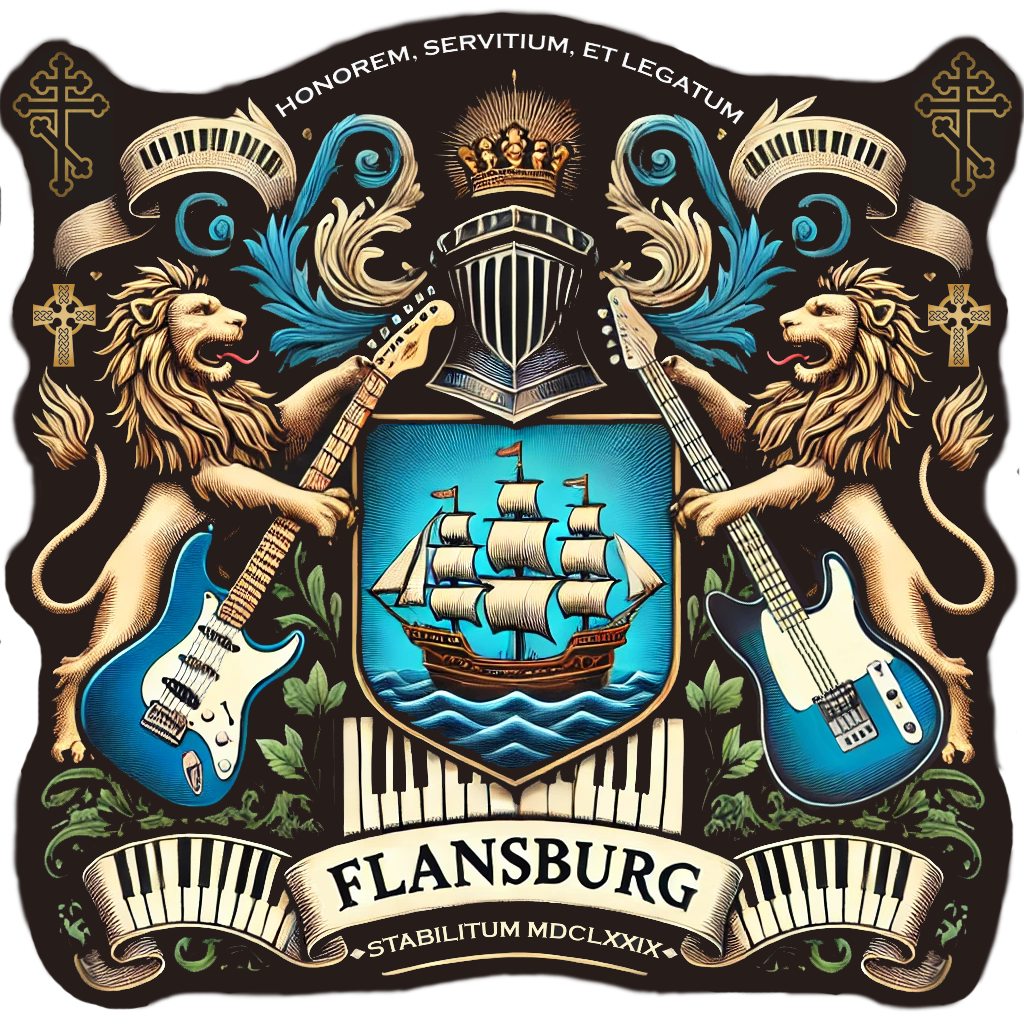
The Flansburg Crest
The Flansburg family crest is a distinctive representation of our heritage and values, integrating meaningful symbols that reflect both personal and ancestral significance. Below is a detailed breakdown of its key features:
- Color Scheme: Blue and Gold Symbolism: The blue symbolizes loyalty and truth, reflecting our steadfastness in supporting each other. Gold represents generosity and the elevation of the mind, emphasizing our commitment to education and knowledge across generations.
- Supporters: Lions Symbolism: The lions, derived from the city of Flensburg coat of arms, embody courage, strength, and nobility. Their gripping the guitars emphasizes our fierce protection of musical heritage and values, highlighting the importance of creativity and artistic expression in our lineage.
- Electric Guitar and Bass Guitar Symbolism: The electric guitar and electric bass guitar signify our deep connection to music and the arts. These instruments represent creativity, expression, and the foundation of musical harmony, celebrating the talents of all family members, from me as a bass guitarist to Julia as a vocalist, and our children's involvement in music.
- Crown Above the Shield Symbolism: The crown signifies royal heritage, including our Dutch ancestry and aspirations for greatness. It reflects our pride in history, encompassing the values of honor and leadership passed down through generations.
- Medieval Helmet Symbolism: Positioned above the shield and below the crown, the medieval helmet symbolizes chivalry, honor, and our commitment to defending values. It reflects the military service traditions in our family, honoring those who have served in various capacities, including my own service in the Navy.
- Ship on the Shield Symbolism: The ship represents exploration and the journey of our family's history, signifying the courage to seek new horizons. It also highlights our proud Navy heritage, reflecting the dedication and service of family members like my father and grandfather.
- Motto: "Honorem, Servitium, et Legatum" Translation: This Latin phrase translates to "Honor, Service, and Legacy," encapsulating the core values that guide our family through generations, emphasizing integrity, commitment to community, and the importance of leaving a meaningful legacy for future generations.
- Flansburg Symbolism: The family name is displayed prominently, reinforcing a sense of unity and pride in our identity. Piano keys depicted on the banner symbolize our musical heritage and the joy that music brings to our lives.
- Stabilitum MDCLXXIX Symbolism: Displayed on the crest, this Latin phrase translates to "Established 1679," the year that Jan Jansen Van Flensburg first got married in the New World. This signifies our long-standing history, establishing a connection to our roots and the legacy of perseverance that defines the Flansburg name.
- Viking Crosses and Orthodox Crosses Symbolism: The Viking crosses honor our Viking ancestry, reflecting a spirit of exploration and bravery. The Orthodox crosses pay homage to Julia's and our children's Russian heritage, showcasing the blending of cultures within our family and the shared values that come from diverse backgrounds.
Meet the Flansburgs
While each of us has our own passions and talents, we're united by our love for family. From the youngest to the eldest, the Flansburgs are a diverse group of personalities that make life interesting and full of fun. We’re proud of our heritage and excited to see what the future holds as our family continues to grow.
Thank you for visiting our page and getting to know a little about who we are. Whether you're family, friend, or just passing through, you're always welcome in the Flansburg home.